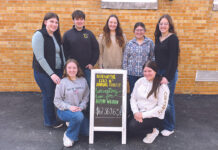REYNOLDSBURG, Ohio — The Ohio Livestock Care Standards Board continued its review of euthanasia standards during a special meeting June 29 at the Ohio Department of Agriculture.
State Veterinarian Tony Forshey gave a detailed report from discussions held with the Technical Research Advisory Committee, as well as its subcommittee.
Forshey presented board members with a draft of suggestions for the euthanasia of cattle — standards that will require some changes per species, but with many points in common.
The drafted policy defines euthanasia as “death with minimal pain and distress and is synonymous with a rapid loss of consciousness and a loss of brain function.”
Discussing details
The board spent most of the afternoon discussing the many details surrounding euthanasia — reasons for why it should be conducted, issues of timeliness, training personnel to perform euthanasia, acceptable methods, confirmation of death, disposal of euthanized animals and verification of euthanasia.
Some of the methods currently being considered as acceptable, after committee meetings and a review of American Veterinary Medical Association standards, include gunshot, penetrating captive bolt, barbiturate overdose, electrocution and exsanguination (bleeding out) — provided that it is proceeded by one of the other methods.
Forshey, along with Mike Bailey, the board’s executive director, answered questions about acceptable euthanasia and the work the different committees are doing to draft standards.
Nature of euthanasia?
A popular question was whether euthanasia of any kind can be performed in an aesthetically acceptable manner, even when all humane standards are followed.
Board member Leon Weaver, who operates Bridgewater Dairy in Montpelier, Ohio, said he would welcome some guidelines for euthanasia. Specifically, he’d like to see some consideration for who should be present when it takes place.
“You shouldn’t have other people around, you shouldn’t have other animals around (when possible),” he said.
Weaver said “there’s certain sensitivities involved,” because of the nature of euthanasia and differences in how people respond.
Forshey referred to the Kentucky Derby as a venue that uses euthanasia in a closed manner. A wagon is brought in with some curtains, the horse is covered from the public’s eye, then euthanized and taken away.
“Everybody knows what’s going to happen,” he said. “Do we like it? No. But is it the most humane thing? Yes.”
Board member Jerry Lahmers, of Newcomerstown, said the term “socially unacceptable” is a perception, rather than a fact. He did not discredit social perceptions, but said they can sometimes conflict with facts, especially with regards to the modern demographics of Ohio, which includes a large population of non-farmers.
“A large part of the population has no intimate knowledge or experience with raising livestock and care of livestock,” he said. “Their thoughts are based on perception, rather than science.”
Balancing concerns
Board member Bobby Moser, vice president of agricultural administration for Ohio State University and Dean of the College of Food, Agricultural and Environmental Sciences, said it’s going to be a balancing act to balance facts and perceptions, because both matter.
“We’re in a society producing food for a society, and I think we’ve (also) got to take a look at what people say,” he said.
The board’s current draft states that euthanasia may be necessary for animals with a terminal prognosis that are unfit for harvest or transport. Conditions include animals that have broken limbs, a fractured spine, or when treatment has been attempted but no improvement is seen, or prognosis for recovery is poor, or improvement is likely to take an unreasonable time, or no treatment is available or cost of treatment is prohibitive.
Euthanasia is to occur in an “appropriate and timely manner,” in accordance to a written protocol for timely euthanasia, developed with the facility’s veterinarian.
Those involved with euthanasia must be trained and competent in the methods selected for use. The board has not finalized these or any other standards, and is still considering their effect on all types and sizes of operations.
The board and its committees will continue to discuss standards for euthanasia and are planning to review an updated draft at the July 13 meeting.









